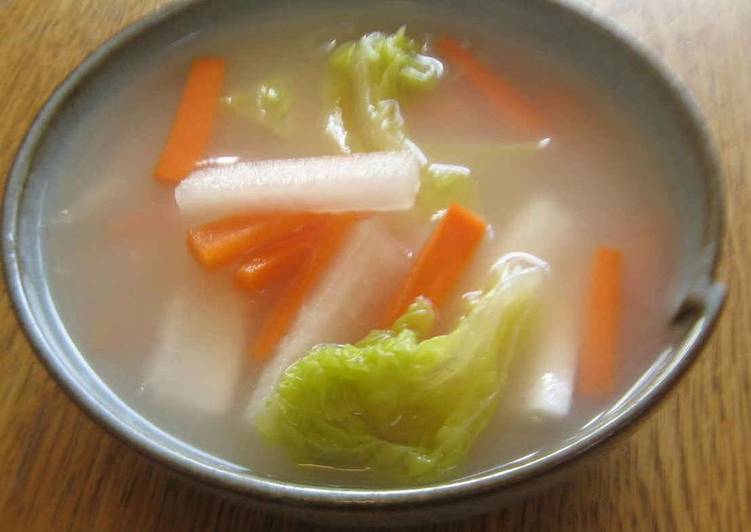Divine Mul (Water) Kimchi Made with Water from Rinsing Rice. Prepare the rinsing water from rice. To rinse the rice, first fill a container with rice, add water, then immediately drain. This is a recipe using a cloudy white mul kimchi juice.
 Great recipe for Eggplant and Cucumber Mul (Water) Kimchi. This is a recipe using a cloudy white mul kimchi juice. I've been told that traditionally it was made with the leftover water from washing rice. You can have Divine Mul (Water) Kimchi Made with Water from Rinsing Rice using 8 ingredients and 9 steps. Here is how you achieve that.
Great recipe for Eggplant and Cucumber Mul (Water) Kimchi. This is a recipe using a cloudy white mul kimchi juice. I've been told that traditionally it was made with the leftover water from washing rice. You can have Divine Mul (Water) Kimchi Made with Water from Rinsing Rice using 8 ingredients and 9 steps. Here is how you achieve that.
Ingredients of Divine Mul (Water) Kimchi Made with Water from Rinsing Rice
- You need of The rinsing water from rice.
- It's of Salt.
- Prepare of Sugar.
- Prepare of thumbtip's worth Ginger (finely julienned).
- Prepare of Vegetables (to pickle).
- It's of leaves + 10 cm + 5 cm WInter Version 1) Chinese cabbage + daikon radish + carrot.
- It's of leaves + 1/2 WInter Version 2) Chinese cabbage + apple.
- You need of leaves + 1 + 5 cm Summer Version) Cucumber + celery + carrot.
People would use it for cooking rather than waste it. This is my take on a recipe I learned. Great recipe for Pear and Apple Mul (Water) Kimchi. This is a recipe using a cloudy white mul kimchi juice.
Divine Mul (Water) Kimchi Made with Water from Rinsing Rice instructions
- Prepare the rinsing water from rice. To rinse the rice, first fill a container with rice, add water, then immediately drain..
- Next, fill it with water again, then set aside a little over 2 cups of the drained water Make sure the water has a thick-looking, opaque whiteness..
- Put the rinsing water from the rice in a sauce pan, add the finely julienned ginger, salt, and sugar, then heat over high. Turn off the heat once it comes to a boil..
- Prepare the vegetables. For example, cut the daikon radish into matchsticks, the carrots into thin matchsticks. For the Chinese cabbage, separate the stalk from the leaves, and chop the stalk into 5 cm long, 1 cm wide pieces, and the leaves into 5 cm wide pieces..
- Put the vegetables into the sauce pan from Step 3 while it's still hot Once it cools down, stir, then lightly cover in plastic wrap. Let it stand for about 1/2 day at room temperature..
- After about 1/2 day, it will produce lactic acid, and will become slightly acidic Give it a taste test If it's the right amount of salt, then it's done..
- If the vegetables are still hard, or if there's hardly any acidity, and only saltiness, let it sit a little longer..
- After it's done pickling, store it in the refrigerator. It will last for about 2 days. Serve it in plenty of the liquid. Drink it up together with the vegetables. Your body will enjoy the nutrients from the rinsing water, too..
- In the winter, use vegetables such as daikon radish, Chinese cabbage, carrots, and turnips. Add some apples to make it even tastier. In the spring, try cabbage and Japanese parsley, and in the summer, I recommend cucumbers and watermelon. Add Japanese pears in the fall..
I've been told that traditionally it was made with the leftover water from washing rice. People would use it for cooking rather than waste it. Nabak Kimchi - Spring Water (Mul) Kimchi. As you may know, Korean food is traditionally served all together, in one table setting. Rinse once and place in a large container.
Comments
Post a Comment